Record Reviews
5 Reviews Found. Use search to find more reviews or follow the links in the review text.
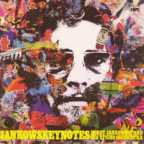 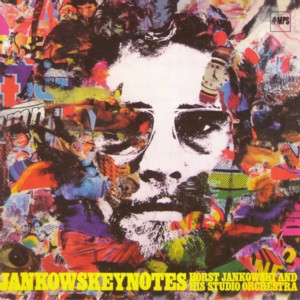 | HORST JANKOWSKI ~ JANKOWSKEYNOTES
MPS 602498148068 (Barcode: 602498148068) ~ GERMANY ~ Jazz-Pop Fusion
Recorded: 1970 Released: 2004
This is a reissue / remaster of an album by German Jazz pianist / composer Horst JankowskiFind albums by this artist, recorded with a large ensemble of German / European Jazz musicians, which includes trumpeters Ack van RooyenFind albums by this artist and Toni RaboldFind albums by this artist, trombonists Peter HerbolzheimerFind albums by this artist and Egon ChristmannFind albums by this artist, saxophonist Bernd RabeFind albums by this artist, guitarist Hans WenzelFind albums by this artist, bassist Gotz WendlandtFind albums by this artist, drummer Branislav KovacevFind albums by this artist and percussionist Jorg GebhardFind albums by this artist. The album presents thirteen tracks, five of which are original compositions by Jankowski, one each is by Wenzel, Rabe and van Rooyen and the rest are Pop standards. The sound quality of this album is phenomenal, and considering the fact it was recorded well over five decades ago, it is truly remarkable.
Jankowski was primarily known for his career as an easy-listening / Pop pianist / composer, but deep inside he was a great Jazz lover and a very talented performer, as this album proves. He followed his Jazz passion in parallel to his popular career.
The music is on the lighter side of the Jazz spectrum, but Jankowski’s piano virtuosity is quite obvious and his interpretations of the standards are very original.
Overall, this is a forgotten chapter of German Jazz, which flirts with Pop and easy-listening, but in retrospect is quite an enjoyable nostalgic trip, which still has its very special charm.
Side Note
The legendary German MPSFind albums on this label (Musik Produktion Schwarzwald) label, founded by Hans Georg Brunner-SchwerFind albums by this artist (HGBS) in 1963, first as SABAFind albums on this label Records and later on from 1968 as MPS Records, was the most important independent European record label, which had an enormous contribution to the development of European Jazz. For many years MPS cooperated with the legendary German producer / author Joachim BerendtFind albums by this artist, my Friend and Mentor, whose visionary approach and open-mindedness brought the crème de la crème of the Jazz (in the broadest meaning of the word) musicians from all over the world to the label. Between 1963 and 1983 MPS produced about five hundred albums, many of which are among the most important Jazz recordings on this planet.
In 1983 the MPS catalog was sold to UniversalFind albums on this label, which sadly resulted in all those artistic treasures to almost disappear from the face of the earth – a situation not only tragic but culturally criminal. Universal reissued a part of the MPS albums (probably 128 titles) on CD between 1999 and 2011 under the "Most Perfect Sound Edition" moniker.
Since 2008 the German Promising MusicFind albums on this label label released some of the MPS recordings, but at a very slow pace.
In 2014 the German company Edel AG bought the MPS catalogue from Universal and released a series of 25 MPS albums on CD with a new slipcase graphic design, which brought all those excellent albums back to life. In 2015 Edel AG started to record and release new albums under the MPS moniker. In 2016 Edel AG released a series of 10 classic MPS albums on CD, which were beautifully remastered and re-packaged, presenting the original artwork and liner notes, as well as new liner notes and photographs. An obvious labor of love, these reissues are what the MPS catalogue truly deserves. This project was continued in 2017 with another series of 10 classic MPS albums released on CD. In later years some new reissues were released sporadically.
Over the years many SABA / MPS albums were reissued in Japan, which is often the only available source for these albums today, but that is a story in itself.
| | Updated: 04/12/2025Posted: 04/12/2025 | CD 1 Oversampling Remastered Recommend To A Friend |
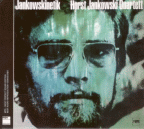 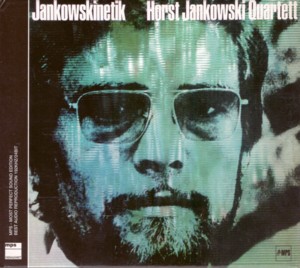 | HORST JANKOWSKI ~ JANKOWSKINETIK
MPS 602498081891 (Barcode: 602498081891) ~ GERMANY ~ Jazz-Pop Fusion
Recorded: 1970 Released: 2003
This is a reissue / remaster of an album by German Jazz pianist / composer Horst JankowskiFind albums by this artist, recorded in a quartet setting with guitarist Hans WenzelFind albums by this artist, bassist Gotz WendlandtFind albums by this artist and Yugoslav drummer Branislav KovacevFind albums by this artist. The album presents ten tracks, four of which are original compositions by Jankowski, one is by Wenzel and the rest are standards. The sound quality of this album is phenomenal, and considering the fact it was recorded well over five decades ago, it is truly remarkable.
Jankowski was primarily known for his career as an easy-listening / Pop pianist / composer, but deep inside he was a great Jazz lover and a very talented performer, as this album proves. He followed his Jazz passion in parallel to his popular career.
The music is on the lighter side of the Jazz spectrum, but Jankowski’s piano virtuosity is quite obvious and his interpretations of the standards are very original.
Overall, this is a forgotten chapter of German Jazz, which flirts with Pop and easy-listening, but in retrospect is quite an enjoyable nostalgic trip, which still has its very special charm.
Side Note
The legendary German MPSFind albums on this label (Musik Produktion Schwarzwald) label, founded by Hans Georg Brunner-SchwerFind albums by this artist (HGBS) in 1963, first as SABAFind albums on this label Records and later on from 1968 as MPS Records, was the most important independent European record label, which had an enormous contribution to the development of European Jazz. For many years MPS cooperated with the legendary German producer / author Joachim BerendtFind albums by this artist, my Friend and Mentor, whose visionary approach and open-mindedness brought the crème de la crème of the Jazz (in the broadest meaning of the word) musicians from all over the world to the label. Between 1963 and 1983 MPS produced about five hundred albums, many of which are among the most important Jazz recordings on this planet.
In 1983 the MPS catalog was sold to UniversalFind albums on this label, which sadly resulted in all those artistic treasures to almost disappear from the face of the earth – a situation not only tragic but culturally criminal. Universal reissued a part of the MPS albums (probably 128 titles) on CD between 1999 and 2011 under the "Most Perfect Sound Edition" moniker.
Since 2008 the German Promising MusicFind albums on this label label released some of the MPS recordings, but at a very slow pace.
In 2014 the German company Edel AG bought the MPS catalogue from Universal and released a series of 25 MPS albums on CD with a new slipcase graphic design, which brought all those excellent albums back to life. In 2015 Edel AG started to record and release new albums under the MPS moniker. In 2016 Edel AG released a series of 10 classic MPS albums on CD, which were beautifully remastered and re-packaged, presenting the original artwork and liner notes, as well as new liner notes and photographs. An obvious labor of love, these reissues are what the MPS catalogue truly deserves. This project was continued in 2017 with another series of 10 classic MPS albums released on CD. In later years some new reissues were released sporadically.
Over the years many SABA / MPS albums were reissued in Japan, which is often the only available source for these albums today, but that is a story in itself.
| | Updated: 07/09/2025Posted: 07/09/2025 | CD 1 Digipak Oversampling Remastered Recommend To A Friend |
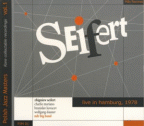 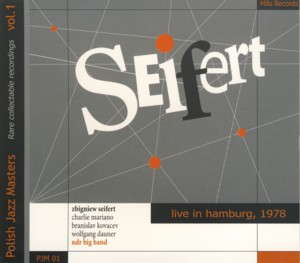 | ZBIGNIEW SEIFERT ~ LIVE IN HAMBURG 1978
MILO 01 (Barcode: 5907513047285) ~ POLAND ~ Jazz-Rock-World Fusion
Recorded: 1978 Released: 2006
This is a sensational live recording by Polish Jazz violinist / composer Zbigniew SeifertFind albums by this artist and his quartet, which includes American (resident in Germany) saxophonist Charlie MarianoFind albums by this artist, German pianist Wolfgang DaunerFind albums by this artist and Yugoslav (also resident in Germany) drummer Branislav KovacevFind albums by this artist, accompanied by the NDR Big BandFind albums by this artist from Hamburg. The album comprises of five tracks, which are simply named "Hamaburg 1" to "Hamaburg 5". The discographical data, such as exact place and date of recording and composition credits are omitted and the album looks and feels like a bootleg, although it is openly sold in Poland.
This music was recorded about a year before Seifert´s untimely death as a victim of cancer. In spite of his terrible sufferings and ordeals related to his rapidly advancing illness, he was at an absolute peak of his musical ability, as this recording plainly demonstrates. He plays vigorously and with incredible passion, and his lengthy solos on this album are among his best ever. Supported by the wonderful quartet and accompanied by the best European Big Band, Seifert is able to immerse himself completely in the music, without any limitations. The result reflects his great love of life and music, which he tried to pursue until the very last moments of his life.
Of course Mariano, Dauner and Kovacev, who were among the finest musicians on the European scene at the time, as well as the outstanding NDR Big Band, are all performing splendidly as well. Stylistically the music includes many elements of Jazz-Rock Fusion and World Music influences, an amalgam that characterized Seifert´s late period. However, his solos are still characterized by the influence of John Coltrane´s legacy, which was the singular most important inspiration on Seifert´s music.
The historic importance of this album is simply invaluable, especially in view of the sadly very limited recorded legacy of Seifert´s works. Seifert managed to record only four albums as a leader during his tragically short lifetime, and the posthumously released material is of secondary importance so far. There are many hours of unreleased music recorded by Seifert waiting to be released, and hopefully those will see the light of day at some stage.
For Polish Jazz fans this album is an absolute must of course, but listeners interested in Jazz violin and anybody who is able to appreciate some of the most moving moments offered within the Jazz idiom should also try to get their hands on this gem ASAP. Absolutely brilliant stuff!
| | | CD 1 Digipak Recommend To A Friend |
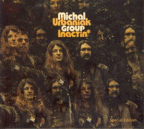 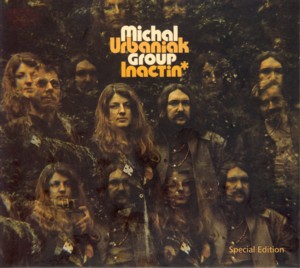 | MICHAL URBANIAK ~ INACTIN
UBX 1020 (Barcode: 888174593128) ~ POLAND ~ Jazz-Rock-World Fusion
Recorded: 1973 Released: 2014
This is a reissue of the second album recorded for the small German label SpiegeleiFind albums on this label by the ensemble headed by Polish Jazz saxophonist / violinist / composer Michal UrbaniakFind albums by this artist. The ensemble included also Urbaniak´s wife at the time, vocalist Urszula DudziakFind albums by this artist, keyboardist Adam MakowiczFind albums by this artist, bassist Roman DylagFind albums by this artist, drummer Czeslaw BartkowskiFind albums by this artist and Yugoslav percussionist Branislav KovacevFind albums by this artist. The album includes seven tracks, all composed by Urbaniak.
This album has several similarities to the live album Urbaniak and his ensemble recorded in 1973 in Poland, released as part of the legendary Polish Jazz series (Vol. 36) and entitled "In ConcertFind albums with this title", which in retrospect was one of Polish Jazz most significant and pivotal recordings and a giant milestone towards the discovery of Jazz-Rock Fusion on the local scene. Those two albums share several of the compositions and almost identical core lineup and most importantly the unique stylistic approach, which mixed Jazz, Rock, Electronics and Free Jazz in a way never previously attempted.
The Spiegelei contact, which also produced the album "Paratyphus BFind albums with this title" recorded a year earlier with the same lineup except for Pawel JarzebskFind albums by this artisti on bass, happened as a result of the success Urbaniak achieved in Europe touring there extensively in the early 1970s, which culminated with his appearance at the Montreux Jazz Festival in 1971 and winning there a first prize as instrumentalist, at the time still playing the saxophone. The switch to violin, which was Urbaniak´s original instrument, changed his career dramatically and marked the new period in his career. The entire period marks a turbulent time for Urbaniak and Dudziak, with their dramatic emigration to USA soon after.
The music Urbaniak´s group created was definitely one of the most innovative and adventurous experiments done at the time, surely by any musicians originating from behind the Iron Curtain. The freedom of expression, which originated in the Free Jazz, mixed with the use of electric instruments and electronic voice enhancements, emerged as some of the most exciting sounds then, and to same extent even today, almost four decades later. Urbaniak used Polish folk motifs and uneven meters to make things even more exciting and Dudziak´s visionary usage of the human voice was eons ahead of its time.
In retrospect the two Spiegelei albums and the three albums Urbaniak recorded for ColumbiaFind albums on this label in the USA during the years immediately after his arrival there remain to this very day as his strongest statements, with the body of work created by him and his groups in the early 1970s being unsurpassed.
The sonic quality of this album is rather Lo-Fi in today´s standards and it’s a pity that a proper remastering effort was not attempted. The album´s liner notes are pretty sketchy and such significant reissue surely deserves much better. Nevertheless this is an iconic piece of music and as such deserves to be listened to today, after being unavailable for a scandalously long period of time.
| | Updated: 01/06/2018Posted: | CD 1 Digipak Recommend To A Friend |
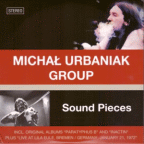 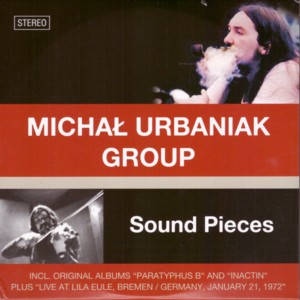 | MICHAL URBANIAK ~ SOUND PIECES
MOOSICUS 1223 (Barcode: 885513122322) ~ POLAND ~ Avant-Garde Jazz-Rock Fusion
Recorded: 1972 - 1973 Released: 2023
This is an expanded 3CD reissue / remaster of the two albums, “Paratyphus BFind albums with this title” and “InactinFind albums with this title”, recorded for the small German label SpiegeleiFind albums on this label by the ensemble headed by Polish Jazz saxophonist / violinist / composer / bandleader Michal UrbaniakFind albums by this artist. The ensemble included also Urbaniak´s wife at the time, vocalist Urszula DudziakFind albums by this artist, keyboardist Adam MakowiczFind albums by this artist, bassists Pawel JarzebskiFind albums by this artist (on the 1st album) and Roman DylagFind albums by this artist (on the 2nd album), drummer Czeslaw BartkowskiFind albums by this artist and Yugoslav percussionist Branislav KovacevFind albums by this artist. The 1st album included five tracks, four by Urbaniak and one by Makowicz, and the 2nd album included seven tracks, all composed by Urbaniak. Both albums are now combined as the twelve tracks of CD1.
CD2 and CD3 of this album present three tracks each, recorded live by Radio Bremen during a club performance on January 21, 1972, a few months before the two studio albums were recorded, and later released in 1973. The material covers the same material that was later recorded in the studio. The lineup playing live is the same as on “Paratyphus B”, except for Kovacev, who is not present.
“Inactin” has several similarities to the live album Urbaniak and his ensemble recorded in 1973 in Poland, released as part of the legendary Polish Jazz series (Vol. 36) and entitled "In ConcertFind albums with this title", which in retrospect was one of Polish Jazz most significant and pivotal recordings and a giant milestone towards the discovery of Jazz-Rock Fusion on the local scene. Those two albums share several of the compositions and almost identical core lineup and most importantly the unique stylistic approach, which mixed Jazz, Rock, Electronics and Free Jazz in a way never previously attempted.
The Spiegelei contact, which produced the two albums, happened as a result of the success Urbaniak achieved in Europe touring there extensively in the early 1970s, which culminated with his appearance at the Montreux Jazz Festival in 1971 and winning there a first prize as instrumentalist, at the time still playing the saxophone. The switch to violin, which was Urbaniak´s original instrument, changed his career dramatically and marked the new period in his career. The entire period marks a turbulent time for Urbaniak and Dudziak, with their dramatic emigration to USA soon after.
The music Urbaniak´s group created was definitely one of the most innovative and adventurous experiments done at the time, surely by any musicians originating from behind the Iron Curtain. The freedom of expression, which originated in the Free Jazz, mixed with the use of electric instruments and electronic voice enhancements, emerged as some of the most exciting sounds then, and to same extent even today, almost five decades later. Urbaniak used Polish folk motifs and uneven meters to make things even more exciting and Dudziak´s visionary usage of the human voice was eons ahead of its time. In retrospect her performances on this album remain unmatched to this very day, again five decades later.
In retrospect the two Spiegelei albums and the three albums Urbaniak recorded for ColumbiaFind albums on this label in the USA during the years immediately after his arrival there remain to this very day as his strongest statements, with the body of work created by him and his groups in the early 1970s being unsurpassed.
The album´s liner notes are pretty sketchy and such significant reissue surely deserves much better. Nevertheless, this is an iconic piece of music and as such deserves to be listened to today, after being unavailable for a scandalously long period of time.
Overall, this album is a dramatic statement in Jazz history, serving as a beacon to the fact that by the time it was recorded, Jazz development moved from America to Europe, never to return again. This music is so much advanced over anything happening beyond the pond, already at that time, and the fact that it originates from Easter Europe, from behind the Iron Curtain, proves that it has been finally liberated from American supremacy, or even perhaps enslavement. Any Jazz lover, who is not aware of this music, and sadly a vast majority is in that position, has very little understanding as what Jazz Music is all about.
| | Updated: 16/02/2024Posted: 16/02/2024 | CD 3 Mini-Sleeve Remastered Bonus Tracks Essential Recommend To A Friend |
|







